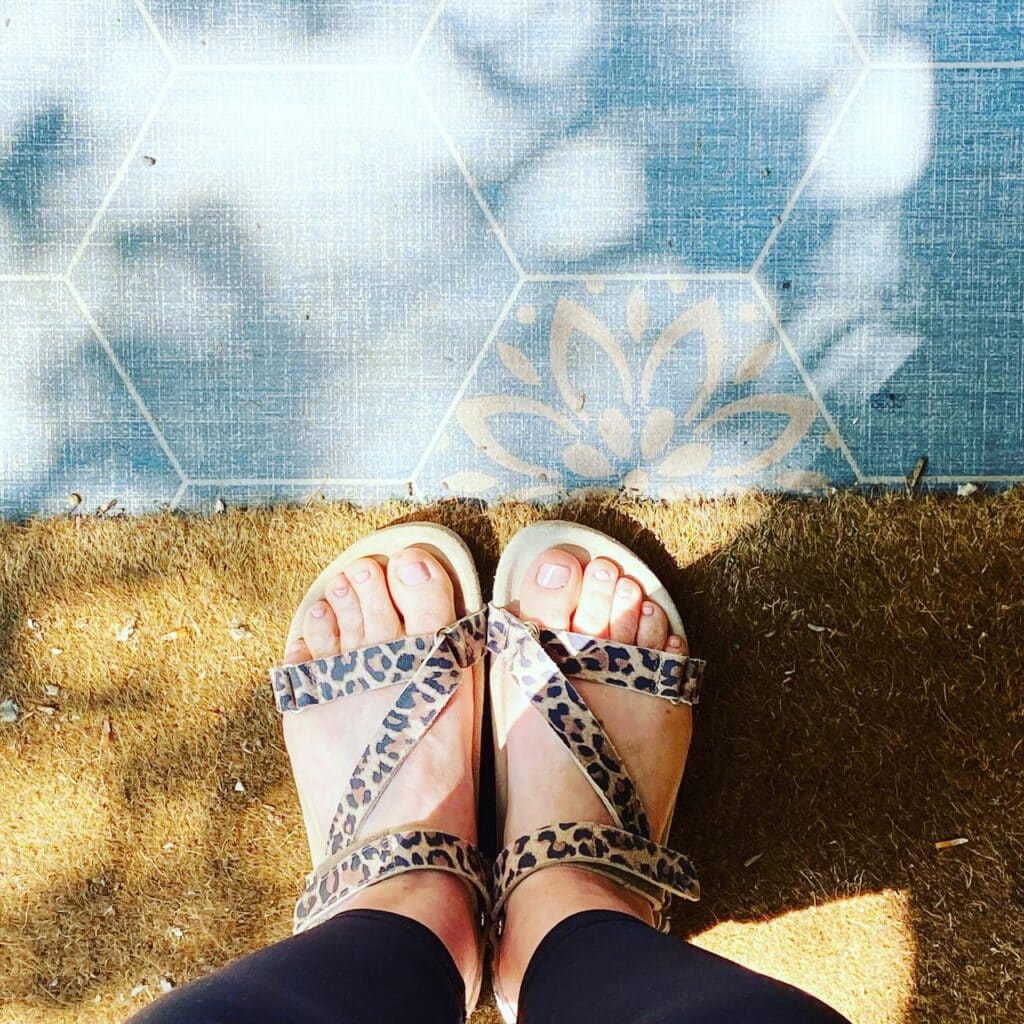Having recently celebrated another successful circumnavigation around the sun (that’s yogi speak for becoming a year older) I am increasingly aware of the looming threat of that old lady disease, osteoporosis. In the UK it is estimated that one in two women and one in five men aged over 50 will have an osteoporotic fracture in their lifetime. Those don’t sound like great statistics to me.
Women are particularly at risk of developing osteoporosis post-menopause as our oestrogen levels plummet. There’s been a lot of noise recently around how strength training for women in peri-to-post menopause can be key to improving bone health by preventing (and even reversing) osteoporosis, but through various conversations I’ve had and thinking things through for myself I’ve come to realise that many of us (myself included) aren’t aware of how specific that strength training needs to be, what it might look like or what it actually involves.
Depending on the type or school of practice, strength training sometimes is, and sometimes isn’t, associated with yoga (and other types of “holistic” exercise such as Pilates), and while some forms of yoga can certainly make you stronger, I wanted to know whether more demanding forms of yoga can, in fact, be beneficial for bone health.
But first, a few facts for you.
Facts about bone health
- Bone is a living tissue with the ability to remodel itself;
- Bone health for life is established in our teens and early adulthood, and bone strength peaks in our thirties;
- Bone remodelling continues throughout life with the average skeleton renewing itself every ten years;
- Bone is covered in oestrogen receptors so lower oestrogen levels mean the remodelling cycle slows down;
- Osteoporosis is a disease with a strong genetic component;
- In the ÛK, 21.9% of women and 6.7% of men aged 50 years or more are estimated to have osteoporosis;
- Half of osteoporotic fractures are in three areas: the hips, spine, and wrists.
Strength for bone health
It blows my mind that bone is a living tissue; this is key information here. Because it has the ability to remodel itself means that not all hope is lost for women peri-to-post menopause. Bone responds to both internal (dietary) and external (movement) stimuli and this is where the strength training element comes in. If you pull on a bone, it reacts by growing back stronger. Movement causes muscle to pull on bone, and if this pull is ‘loaded’, the force on the muscles is stronger and therefore the effect on the bone greater. Any increase in ‘loading’ above normal levels has the best chance of increasing bone density. The stronger the bone, or the higher its density, the less likely you are to develop osteoporosis.
So, the best way to ‘load’ the muscular pull on the bone is through strength training. But here’s where it get complicated. I have friends who are swimmers, avid Pilates fans, nordic walkers – not to mention yogis – and they would all love their preferred choice of physical activity to also benefit their bones. And it doesn’t help that, as already mentioned, most of these types of exercise definitely improve your strength so could be classed as strength training.
What type of training for bone health?
Training for strength comes in three specific forms: strength, endurance and power. Power training is what we see in the Olympics: lifting heavy weights with explosive power and, I suspect, not anything many of us want to get into at this point in our lives. Endurance training is focussed on improved muscular endurance, typically though longer duration exercise with lighter weights and higher reps. The goal is to be able to perform a given exercise for a longer period of time before becoming fatigued and is the focus of many strength training programs directed at women. Now, no-one is saying the latter form of exercise is easy (think a Barre class, if you’ve ever braved one!) but it targets the wrong type of muscle fibres to be truly effective for bone health.
Strength training that increases bone density involves weights that are hard for you lift. From the very beginning. And we’re not talking power lifting here. Basically you should be able to manage – at the most – six repetitions, with significant effort towards the end. And, if you’re training regularly and you become stronger so these reps start to feel easy, you need to increase the weight to make it hard (and effective for bone health) again. That’s why it’s also known as progressive muscle resistance training.
It can feel overwhelming, but the good news is there are only four types of exercise you should be aiming to include if you’re focussing on bone health:
- Hinge (can start as a bridge, progressing onto a weighted deadlift)
- Push (can start as a wall press, progressing onto an overhead press)
- Pull (can start as a seated upright row with a band, progressing onto a single arm dumbbell row)
- Squat (can start as sit-to-stand, progressing onto weighted squats)
The other piece of good news is that, according to a groundbreaking study of postmenopausal women with low bone density levels, just two sessions of 30 mins a week can be enough to reverse bone density loss. In this podcast study lead Professor Belinda Beck talks all things bone health and dispels the myth that women who have already developed osteoporosis can’t do strength training.* Previously work with women with osteoporosis focussed on improving balance to prevent falls (the most common cause of fracture), in the belief that there was little that could be done about reversing bone density loss.
Resources on bone health
And although this is excellent news, we all know that prevention is better than cure. If you are interested in trying strength training for bone health, the Royal Osteoporosis Society has some excellent resources, including links to videos they have made that work through specifically the progressions as outlined above. If you want a yogi’s view, I would highly recommend this podcast with duo yoga teacher Laurel Beversdorf and physio Dr Sarah Court, who are brilliant advocates of lifting weights.
I would also strongly recommend some professional input should you decide to embark on a strength for bone health training program. Not only to make sure you are completing the exercises properly and remain injury-free, but also because once you progress onto weights you need some proper equipment which is generally only found in a gym. I’m sorry to say that the pair of pink 1kg weights you have lying around simply won’t cut it. I have been going to a PT forever (or at least since I started hip rehab) and recently asked to incorporate some strength training into our weekly sessions. Four weeks in and it’s a love/hate relationship. I never thought I’d enjoy lifting weights and I can’t say I relish the prospect of a 50kg deadlift next Monday but I am enjoying the challenge and aside from feeling slightly smug in that I’m addressing my bone health in a constructive way, I’m already feeling stronger for it, which I love. I’ve even managed to impress my sixteen-year-old son, which is no mean feat.
It might initially seem daunting, but get yourself lifting weights now and your 60+, 70+ and – God-willing – 80+ year old self will thank you for it. It seems that bone health, along with many other aspects of being human, falls into the “use it or lose it” category. We don’t necessarily deteriorate with age, sometimes we simply allow it to happen to us as we get older. And it’s amazing how all the things that we thought previously wore our bodies out and made us older we now know to be the very things that keep us young!
*If you want to skip about bone health in children, from 57 minutes Professor Beck talks what we can do in midlife and later to support bone health.


